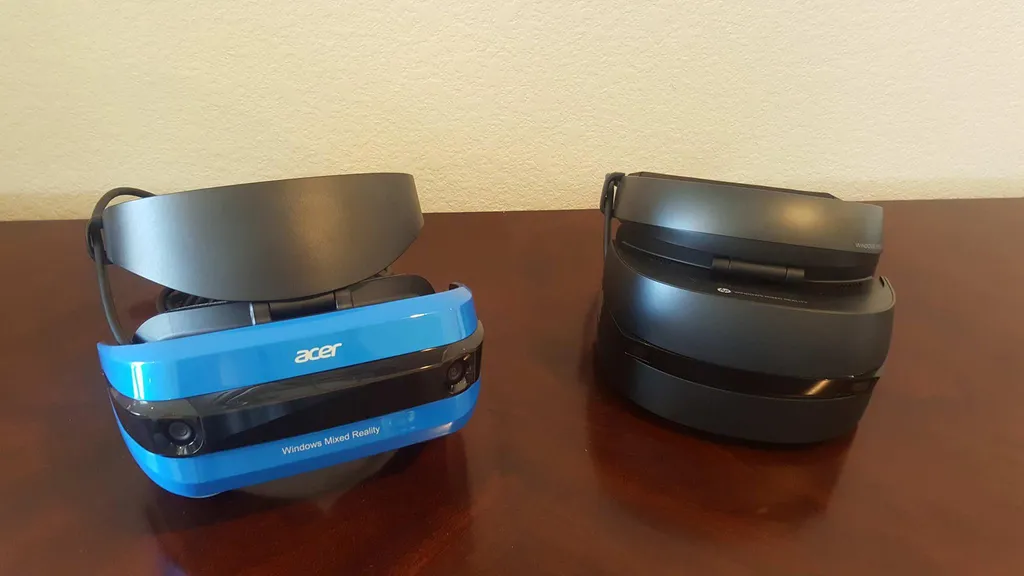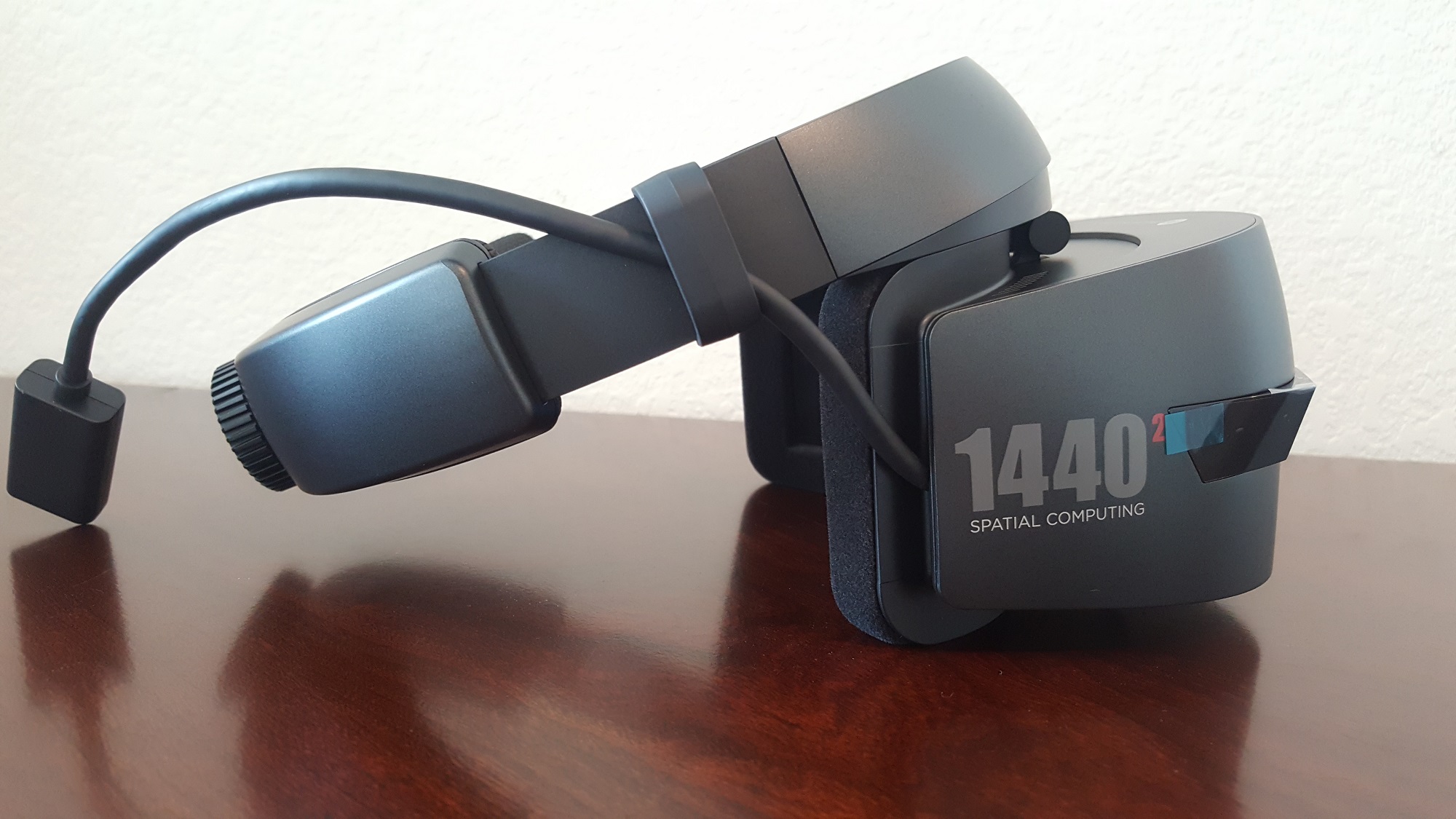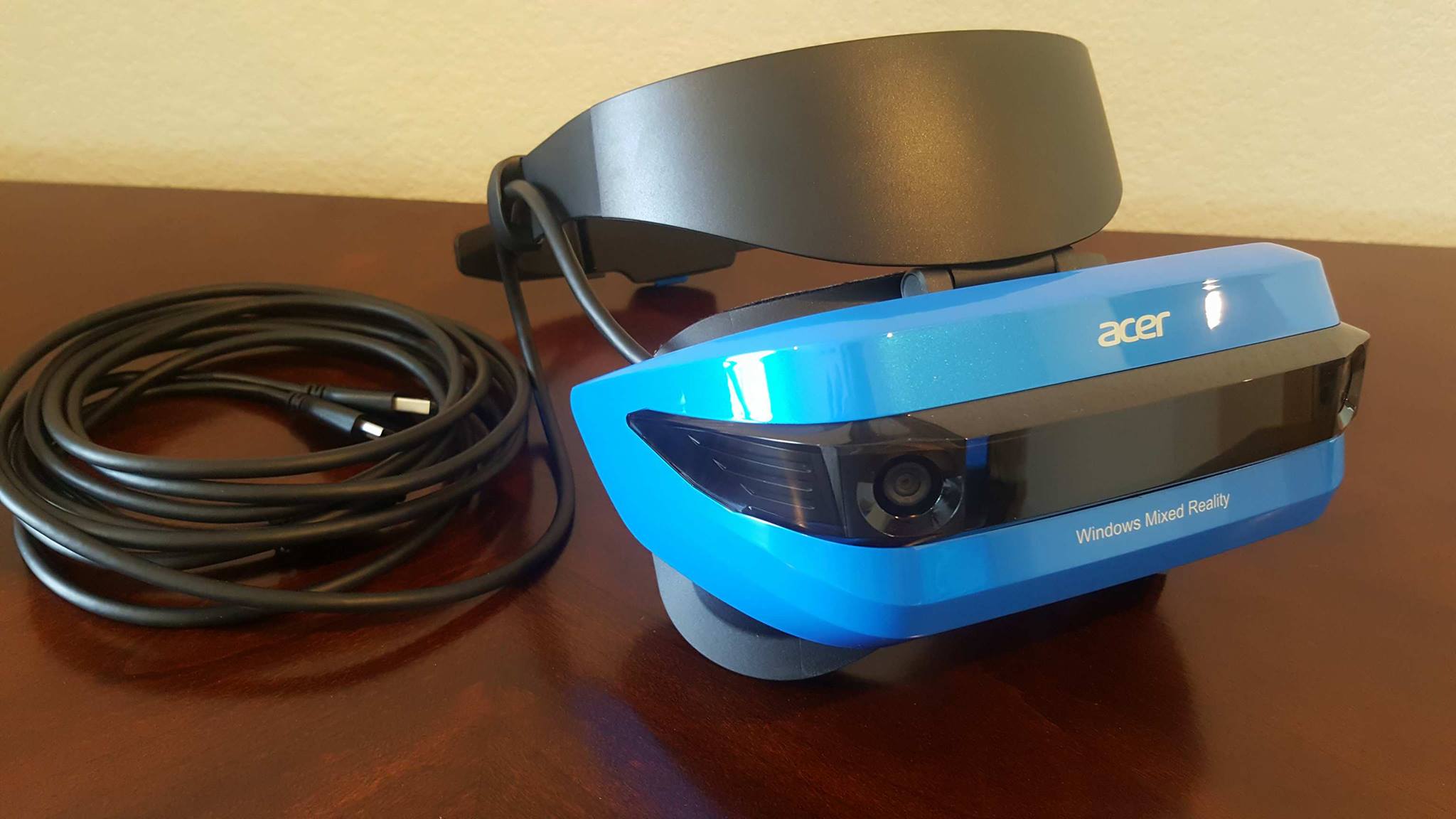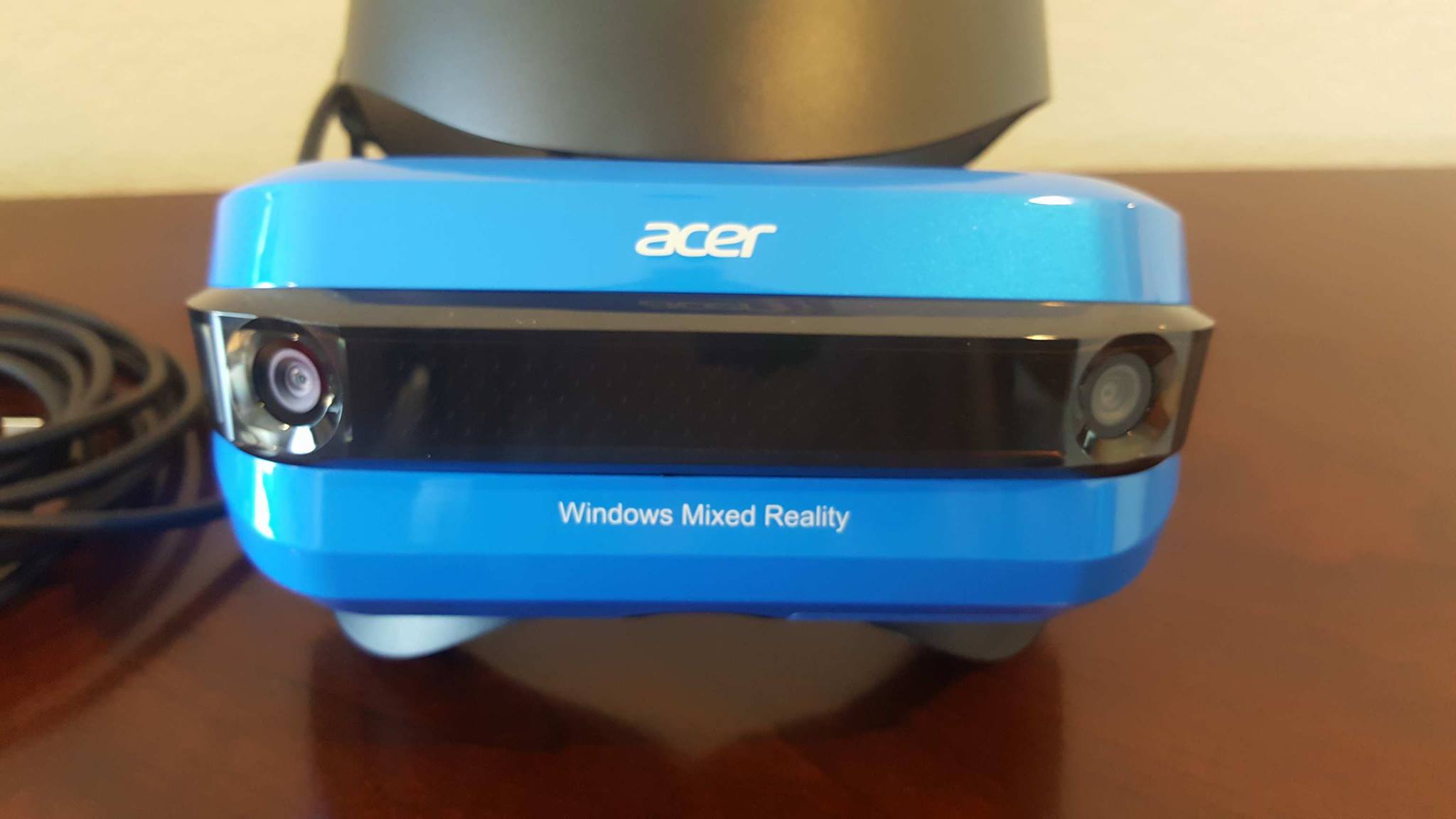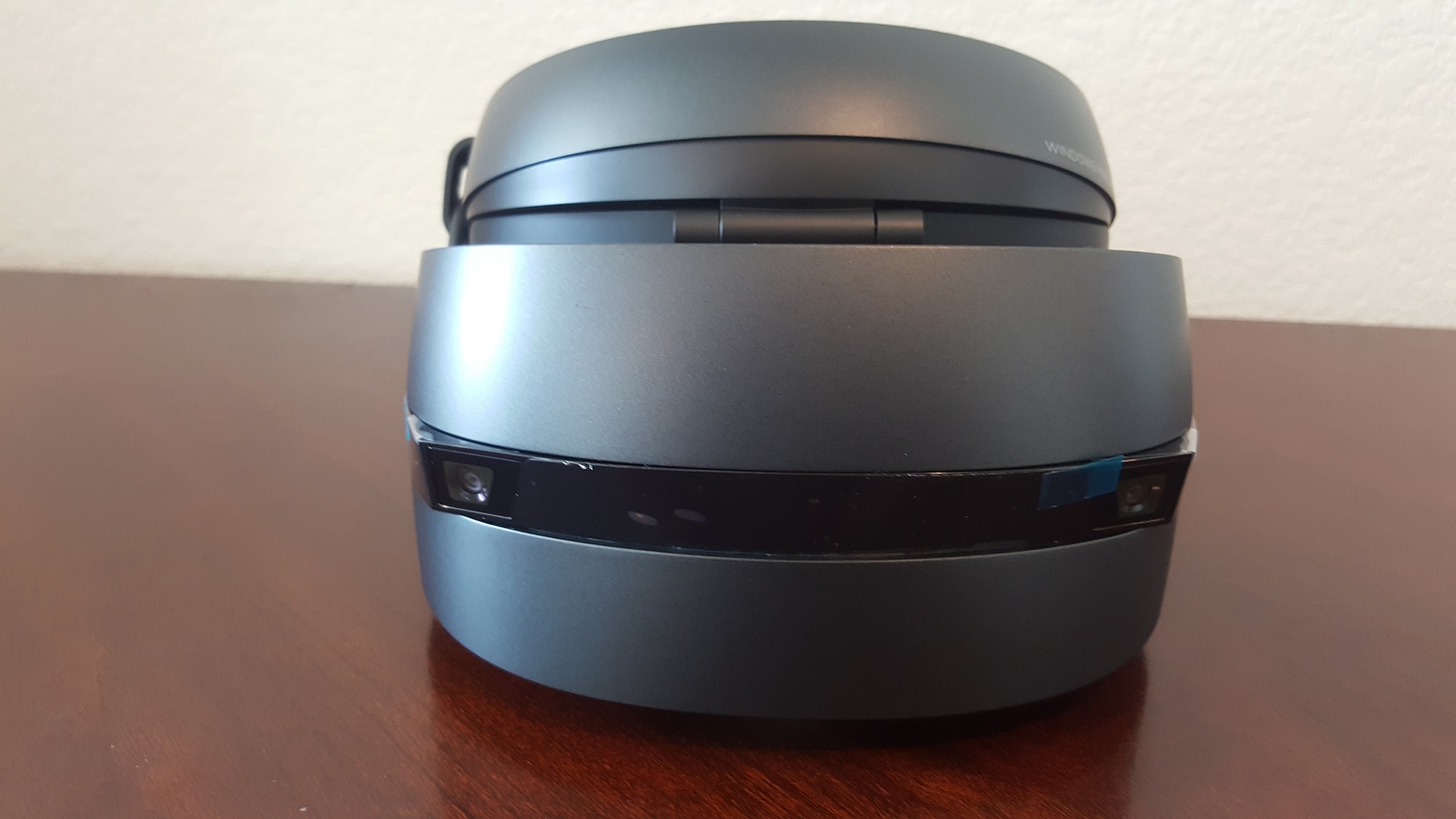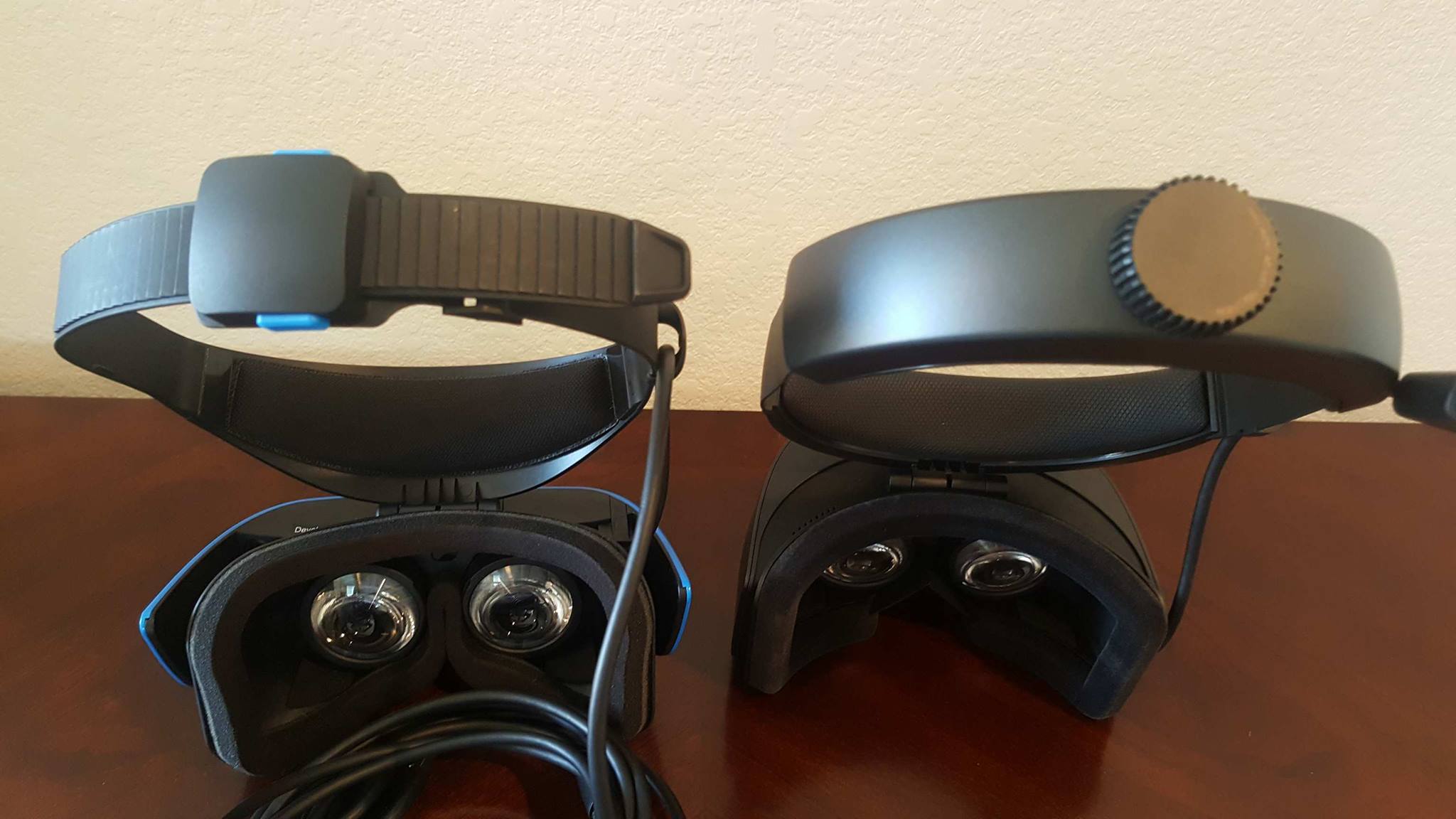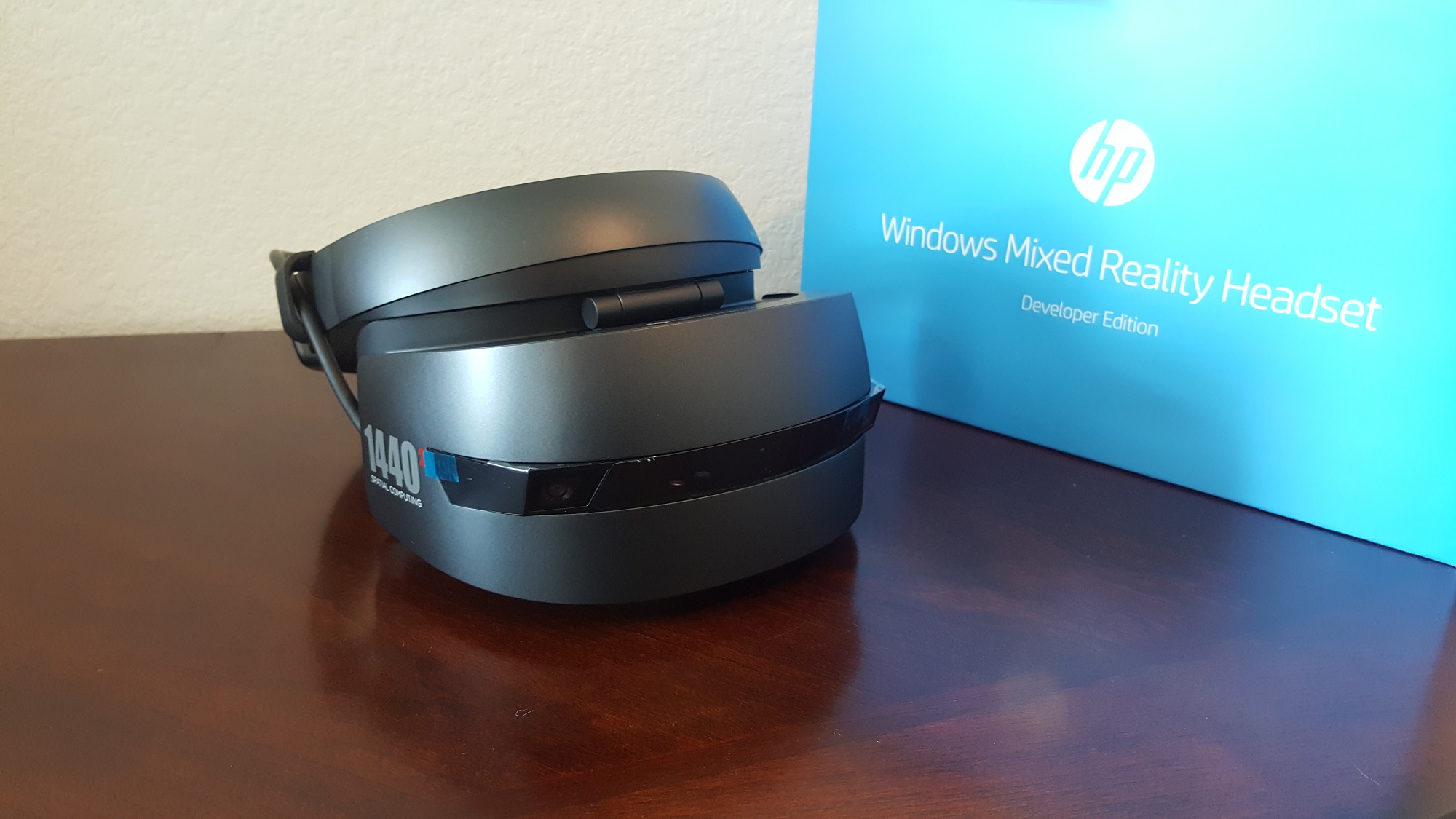For the past year and a half the world has known two primary PC VR ecosystems: the Oculus Home-powered Oculus Rift (and Touch controllers) and the SteamVR-powered HTC Vive (although the Rift works on SteamVR too, but that’s beside the point sort of). There have been a handful of others that popped up, like OSVR, but for the most part the PC VR world has been a two headset (or two platform) race.
Microsoft is looking to change that with their “Windows Mixed Reality” initiative. We’re still waiting to try the controllers though and we don’t know if the Windows headsets will work with SteamVR yet either.
The Specs
For the sake of this comparison we won’t be talking much about the Windows VR platform itself because we covered that already and it’s identical on both HP (images of that headset here) and Acer (developer impressions here). The Acer is the cheapest Windows VR headset we’ve seen yet, with its devkit coming in at just $299, whereas the HP is a bit more at $329.
The only differences between these two headsets as far as we can tell is literally just the look and feel. But before we get to that, here are the shared specs:
- Both lenses are 1440 x 1440 bringing the full resolution to 2880×1440 combined,
- 2.89” diagonal display size (x2),
- Two cameras embedded on the front for inside-out positional tracking,
- 95-degree horizontal field of view,
- Up to 90Hz refresh rate,
- Front-hinged display, similar to the PSVR,
- Built in mic and audio jack for headphones,
- Single cable with HDMI 2.0 and USB 3.0 connectivity points,
- Four meter-long cable.
As a result, the only difference between the two is that the HP has a “double-padded” headband and adjustment knob (as opposed to a strap-design on the Acer) and the HP’s cord can be detached, just like the PSVR. HP has also said previously there is more nose room in theirs too and the Acer is $30 cheaper. Other than that they’re basically the same and operate using the same “Windows Mixed Reality Platform” on your PC.
The Look
Maybe I’m shallow and close-minded but I can’t shake the feeling that the Acer headset looks like a cheap toy to me. In my office I’m surrounded by sleek black and/or white devices like both versions of the Samsung Gear VR, Oculus Rift CV1, HTC Vive, and PlayStation VR. The HP fits in right alongside those with a small, compact design ripped right out of RoboCop. Then you’ve got the Acer with its bright blue color and microwave-meets-toaster visual appearance. The novelty might appeal to some, but not to me.
When you look at them each side-by-side (shown at the top of the article) the difference is even more clear. One of them looks like a >$300 device (the HP) and the other looks like an imitation of an old Viewmaster (Acer). There is probably a market for a device like that, but I’m not sure professional applications of VR is that market.
Going beyond the color though even the shape feels a bit off. All other headsets I’ve worn have tried to maintain a sleek design that fits naturally and rests comfortably. Even though the Acer headset is as comfortable as can be expected the shape just looks a little bit off.
And on the back you can see the biggest difference. The HP has a knob like the PSVR that lets you tighten and loosen the band around your head easily (shown below), whereas the Acer has a clicking strap like the kind on roller blades and some swimming goggles. In short, it feels cheaply made.
The Fit
As someone that needs to wear glasses at all times (even when inside VR) I’m used to discomfort. The only headset on the market that fits comfortably and doesn’t make me feel like my face is getting squished is the PSVR because of its headband design. Luckily, both the HP and Acer adopted similar fits.
They work pretty much the same in practice. You loosen the headband, place it around your head, then tighten. The difference is that that the HP has an easy to use knob whereas the Acer uses a clicking snap with a button you press to slide it back and forth. It’s not hard to use, but it’s not as convenient as the HP’s knob. Thankfully my hair never got stuck in the Acer strap like it does with swimming goggles, but I could see it happening to someone with very long hair.
Also, the backstrap for the Acer is literally just a plastic strap that gets tightened around your skull. The HP has actual padding all around the headband keeping it cushioned and comfortable on all sides which is, again, like the PSVR, and it’s a lot more comfortable as a result. Thankfully both are hinged and let you lift them upwards to easily see the real world quickly if needed, which is great while developing.
Clearly some cost-cutting measures were made for the Acer, which is fine for people that might not care too much about added comfort, but for me it’s just as important as any other feature a headset could tout and the difference is clear in this regard. For storage and ease of use I’ve also gotta say that the breakaway cable on the HP is really nifty.
Verdict – Which Windows VR Headset is Better?
The prices are almost the same, the specs are identical, and they both run the exact same platform. Honestly it just comes down to whether or not you think extra comfort and a sleeker look is worth the additional $30. Unless you’re looking to cut costs absolutely anyway possible, I’d say yes, the HP Windows VR headset is better than the Acer. The HP headset looks like a professional product instead of a cheap toy, has extra padding, and just feels sturdier. For the small upgrade fee you can have a headset that really feels much better overall.
However, it needs to be stated clearly that neither of these are consumer products yet. They’re both devkits still which means only developers interested in creating content should purchase them right now. If you’re a normal consumer then you’re gonna find yourself bored very quickly at this stage.
This isn’t the end of the Windows VR headset comparisons though. We’re still waiting to get our hands on the Dell and Asus devices too, so the Windows VR ecosystem is already heating up and we don’t even have all of the devkits in our hands yet.
You can buy the HP Windows VR headset here and the Acer Windows VR headset here.
Have you tried either the HP or the Acer? Curious about getting on for yourself? Let us know what you think down in the comments below!

